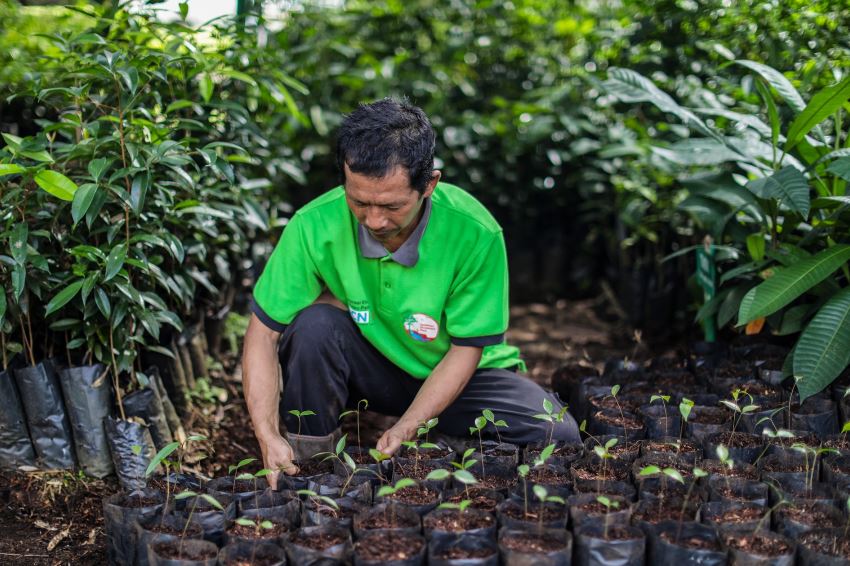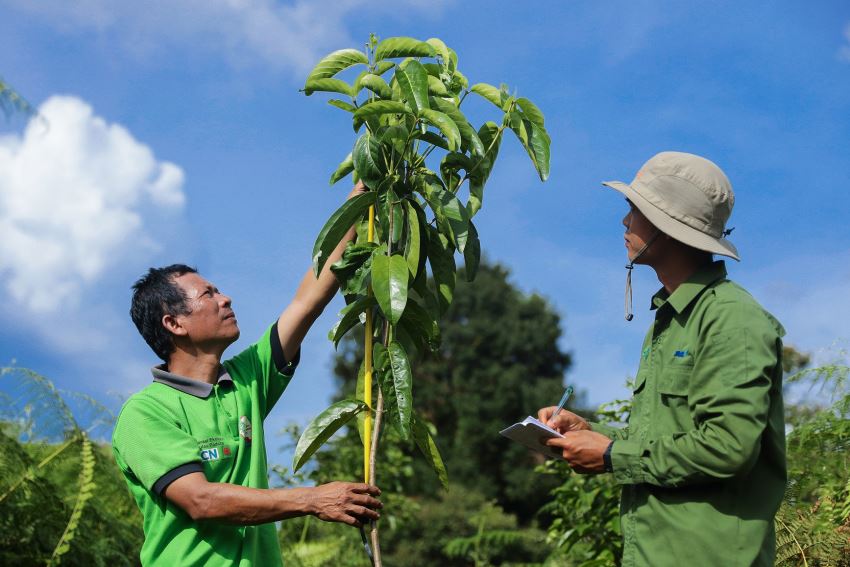March 31, 2023
Over the past decade, Restorasi Ekosistem Riau (RER) has been working to protect 150,693 hectares of rainforest on Sumatra’s Kampar Peninsula and nearby Padang Island. But protection is only part of the story. RER is also working to restore and expand this area by nurturing new growth. Driving these regeneration efforts is the RER plant nursery – a place where the future of Riau’s forests is beginning to take root.
What is the RER nursery?
The RER nursery is where native tree species are nurtured until they are ready to be replanted in the wild. By taking seeds and saplings from the surrounding forest, the nursery is improving their chances of survival, and scaling up natural growth in the RER concession areas.
What is its purpose?
The overarching aim of the RER nursery is to become a hub for native tree species; a place that can provide seedlings for use in wider restoration activities. The RER restoration department uses these seedlings in their ongoing planting activities to rejuvenate degraded peat swamp forest ecosystems.

What is its capacity?
RER currently operates a total of six nurseries, comprising four (one central nursery and three satellite nurseries) in the Kampar Peninsula and two (one central nursery and one satellite nursery) on Padang Island. The biggest is the central nursery in the Kampar Peninsula; covering an area of 175m2, it can hold up to 25,000 seedlings. Last year alone, RER nurseries produced a total of 28,960 plants.
What tree species are grown here?
More than 60 different tree species are grown in RER’s six plant nurseries, many of which are threatened by extinction and feature on the IUCN Red List:
In 2022, the top five species used in restoration efforts by RER were Kayu Ara (Ficus sp), Meranti Lilin/Meranti Bunga (Shorea teysmanniana), Kelat (Syzygium sp), Meranti Paya (Shorea platycarpa ) and Nasi-nasi (Sterculia zeylanicum).
How are the seedlings selected?
RER workers patrol the surrounding forest looking for uprooted seedlings and seeds that have fallen to the ground, while also carefully taking cuttings from mature trees. By bringing home seeds, cuttings and young saplings from the wild, the RER plant nursery is able to give these endangered species a helping hand, to ensure their descendants will survive and thrive in the rainforests of Sumatra.
What are some of the RER forest restoration (recovery) efforts?
There are generally two ways in which restoration of a forest can happen: through natural and active regeneration of trees. Each process works to a different timeframe, and with a different level of involvement from people. Let’s take a closer look at each one of these recovery efforts:

How does RER decide which approach is needed?
RER uses a combination of all two regeneration techniques in its concession areas, in order to achieve richer and more resilient biodiversity in the landscape. RER also implements an adaptive management approach, whereby the ecological and human factors of each working area are assessed on an annual basis, and then the correct course of action is decided based on the unique conditions and requirements at ground level.
What are some of RER’s recovery goals?
In terms of active regeneration programs currently underway, RER’s aim is to establish 400 trees per hectare on a 5×5 meter spacing. To achieve this target, we conduct a survival check six months after planting – any dead seedlings are replaced with specimens grown in the nursery. This helps to ensure all new growth in RER stays on track.
What are some of the main challenges facing the RER nursery for plants?
There are a number of challenges involved in running the nursery and planting our seedlings out in the forest – some of which we can help to mitigate, while others are beyond our control. Here’s a closer look at three of the main obstacles we’re working to overcome:
In spite of all these challenges, RER nursery continues working to give nature a helping hand. Although the process can be hard at times, this makes it all the more satisfying when we do find the seeds we’re looking for, and then protect them from the elements in our nurseries until they germinate. Seeing these rare species back in the wild where they belong makes all the challenges worthwhile – it’s also the reason why the RER plant nursery is such an important part of the natural regeneration process in Riau.
To find out more about our forest restoration efforts in Riau, visit the RER website.